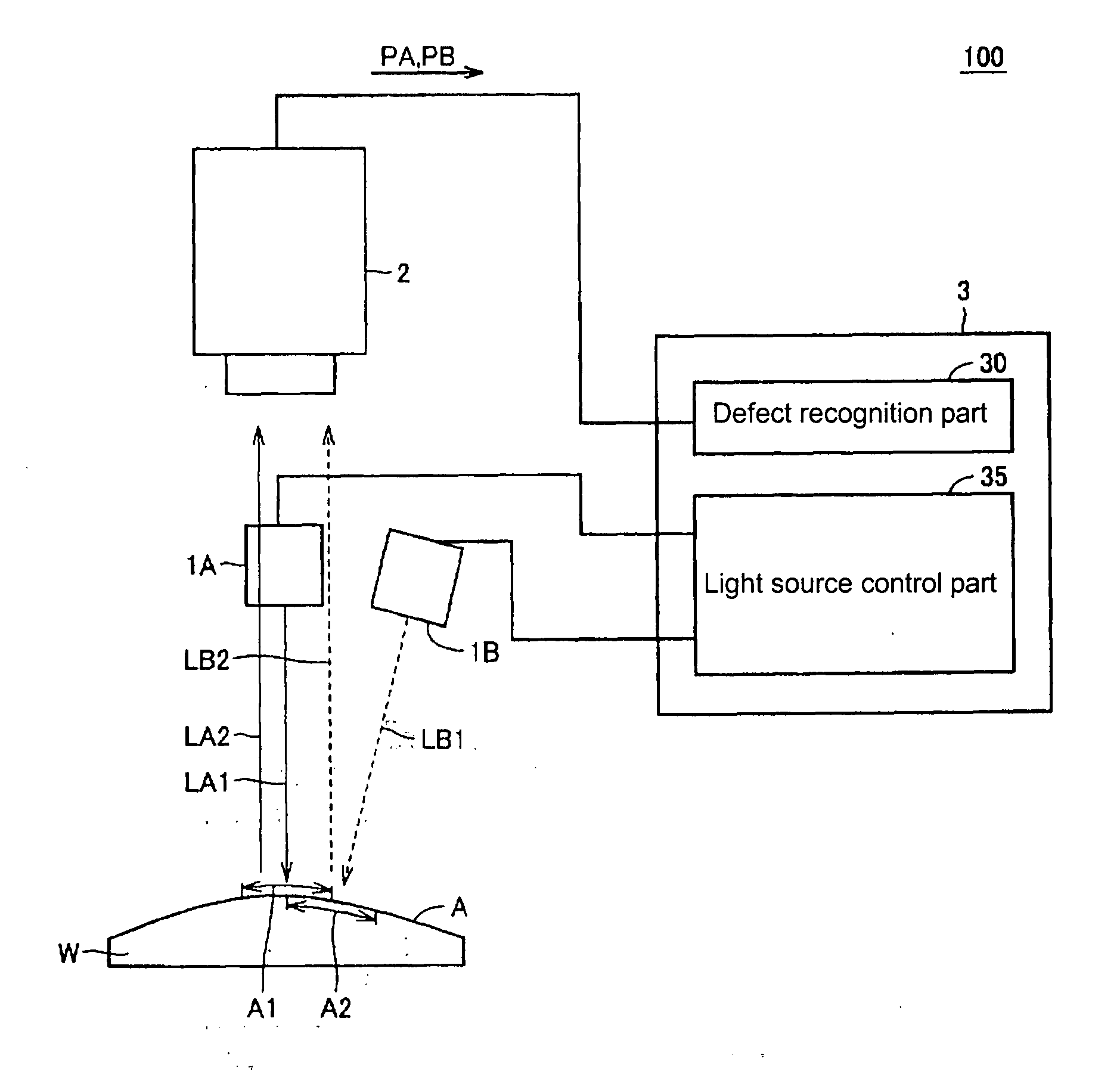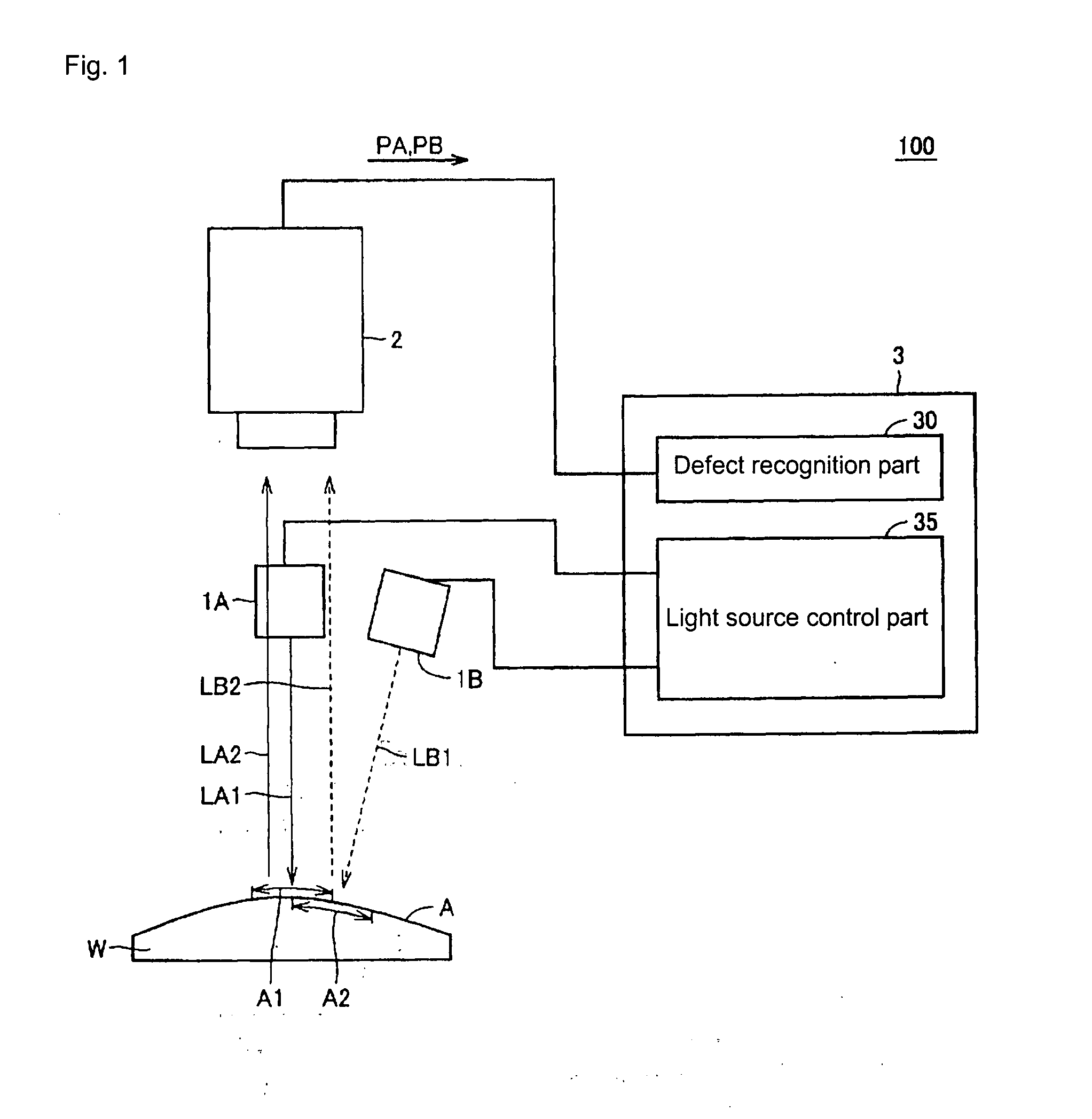Defect inspection apparatus and defect inspection method
- Summary
- Abstract
- Description
- Claims
- Application Information
AI Technical Summary
Benefits of technology
Problems solved by technology
Method used
Image
Examples
embodiment 1
[0072]FIG. 1 shows a view showing a basic structure of a defect inspection apparatus of an embodiment 1.
[0073]In FIG. 1, a defect inspection apparatus 100 inspects whether a defect is present on a glossy surface of a work W (inspection object). Note that the defect means an irregularity defect (defect in an appearance of a convex shape or a concave shape compared to a periphery).
[0074]The work W is a metal or a resin coated with a transparent material on its surface. Note that in FIG. 1, the surface of the work W (inspected surface A) is a curved surface. However, the surface of the work W may be a flat surface.
[0075]The defect inspection apparatus 100 includes a plurality of light sources 1A, 1B, an imaging apparatus 2, and a main control part 3.
[0076]The light source 1A emits irradiation light LA1 toward the inspected surface A. Therefore, an irradiation area A1 is formed on the inspected surface A. The irradiation light LA1 is regularly reflected on the inspected surface A. Thus,...
embodiment 2
[0123]An entire body of the defect inspection apparatus of the embodiment 2 is the same as the structure of the defect inspection apparatus 100 as shown in FIG. 1. Therefore, the explanation thereafter is not repeated for the structure of the defect inspection apparatus of the embodiment 2. In addition, the block diagram of the main control part provided in the defect inspection apparatus of the embodiment 2 is the same as the block diagram as shown in FIG. 3. Therefore, the explanation thereafter is not repeated.
[0124]The defect inspection apparatus of the embodiment 2 is different from the embodiment 1, in the point of having the same peak wavelengths of the irradiation lights LA1 and LB1 in FIG. 1 (namely, having the same the characteristics). In addition, the main control part 3 turns on the light sources 1A and 1B sequentially. In these points, the defect inspection apparatus of the embodiment 2 is different from the defect inspection apparatus of the embodiment 1.
[0125]When th...
PUM
 Login to View More
Login to View More Abstract
Description
Claims
Application Information
 Login to View More
Login to View More - R&D
- Intellectual Property
- Life Sciences
- Materials
- Tech Scout
- Unparalleled Data Quality
- Higher Quality Content
- 60% Fewer Hallucinations
Browse by: Latest US Patents, China's latest patents, Technical Efficacy Thesaurus, Application Domain, Technology Topic, Popular Technical Reports.
© 2025 PatSnap. All rights reserved.Legal|Privacy policy|Modern Slavery Act Transparency Statement|Sitemap|About US| Contact US: help@patsnap.com



